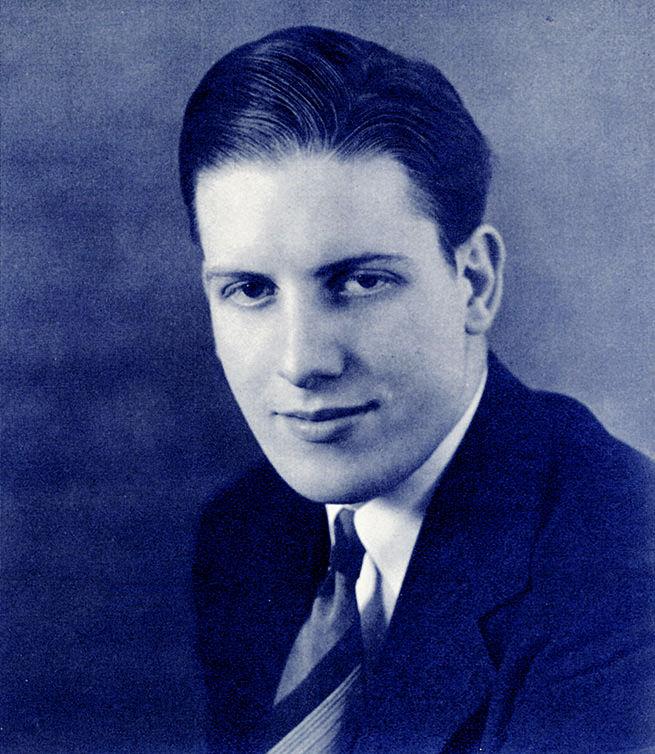
The late Pete Armstrong ’42 (died 2009) was a printing executive by profession.
Back in 1996, he marked 50 years at McCormick-Armstrong Co. Inc., having overseen the operations of the venerable Wichita-based printing firm for many years as chairman and principal owner, as well as serving as chairman and director of three related companies.
He had grown up with exposure to the printing industry: His father was the Armstrong of the company’s original partners.
In 1997, a congratulatory banner commemorating his half-century at the company still hung among the other anamnestic clutter of his second-floor office.
Although retired from full-time involvement with the daily operations of the firm, he still spent hours at work, and I was lucky enough one day to have him talk with me about his career, his days as a University of Wichita student, photography — and bebop.
“Here it is,” Armstrong said that day in his office, plucking a record album from a pile of papers and publications stacked on a shelf behind his desk. “It’s the first recording ever made of Charlie Parker, recorded right here in Wichita.”
The album cover features a photo of jazz great Parker. Armstrong shot it. It was 1940, with the nation steeling itself for World War II.
In Wichita, Armstrong and two of his Alpha Gamma Gamma frat brothers, Bud Gould ’40 (died 2002) and Fred Higginson ’42/46 (died 1991), are digging the fact that one of their favorite bandleaders, Jay McShann, has booked a gig at the Trocadero Ballroom for his group, which includes Parker, the revolutionary alto saxophonist who by 1945 would be one of the biggest names in jazz.
“In college,” Gould told me in 1997, “Pete and I were fraternity brothers. I worked at a local radio station (KFBI) — back then they hired live musicians. Fred and Pete organized a jam session with Jay McShann, who had a Kansas City jazz band. I arranged to use the studio at the station one weekend in November of 1940. Years later the recording came out commercially (in 1974, as Charlie Parker: First Recordings!).”
Gould, a music professor who taught at WSU and Northern Arizona, said in 1990 that he was “flabbergasted when I heard Parker. I didn’t understand what he was doing, and I couldn’t believe he was doing it while he was only twenty years old.”
Gould played trombone and violin in the sessions. First Recordings! won Parker a Grammy for best jazz performance by a soloist, 19 years after his death. The co-inventor of bebop (along with Dizzy Gillespie) died in NYC at age 34.
Although Armstrong didn’t have Gould’s musical ear for all of the intricacies of Parker’s innovations on the alto sax, Gould noted that his friend had “always been a great lover of jazz.”
And photography.
The photo of Parker fired other recollections for Armstrong that day in 1997 in his office. As he put the album away, he talked about his lifelong interest in photography.
He had served as a photographic officer in the U.S. Army Air Force during the war. Then in 1946, he began his career at McCormick-Armstrong — as a photographer.





